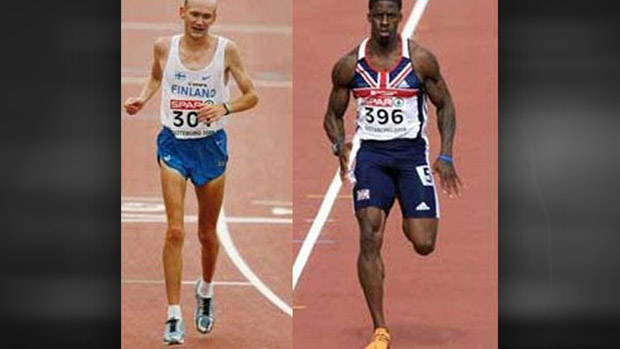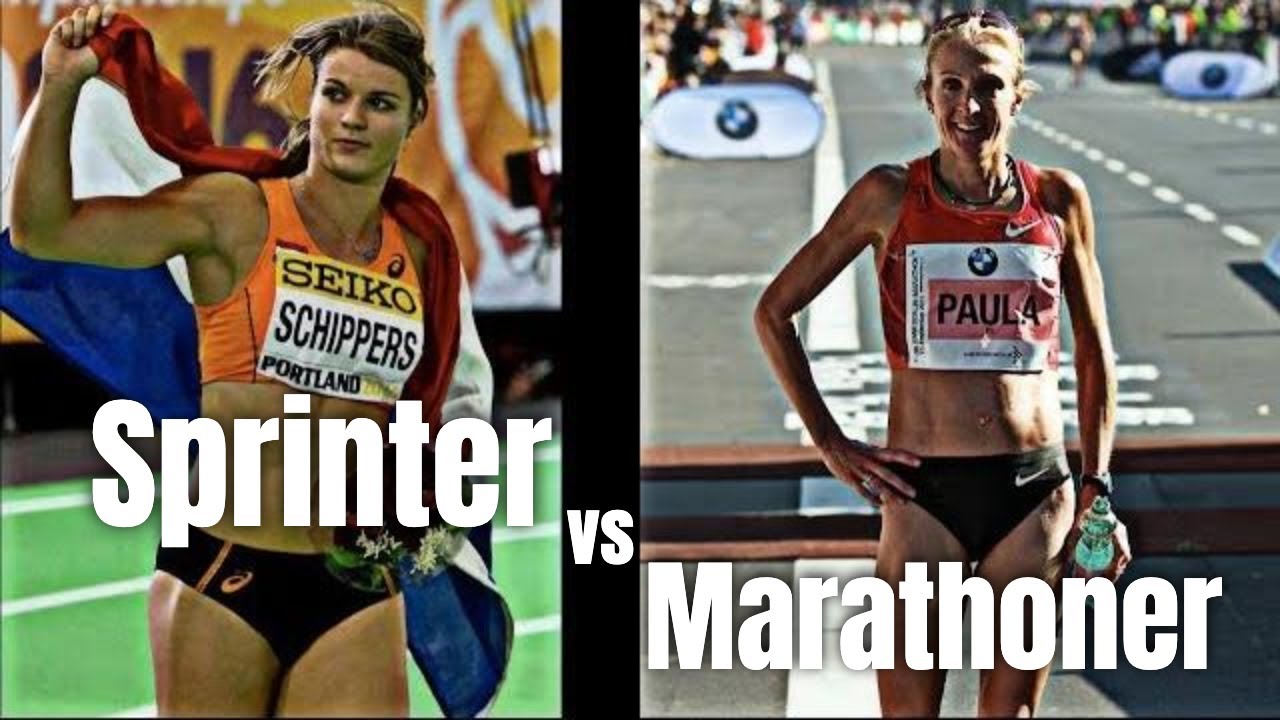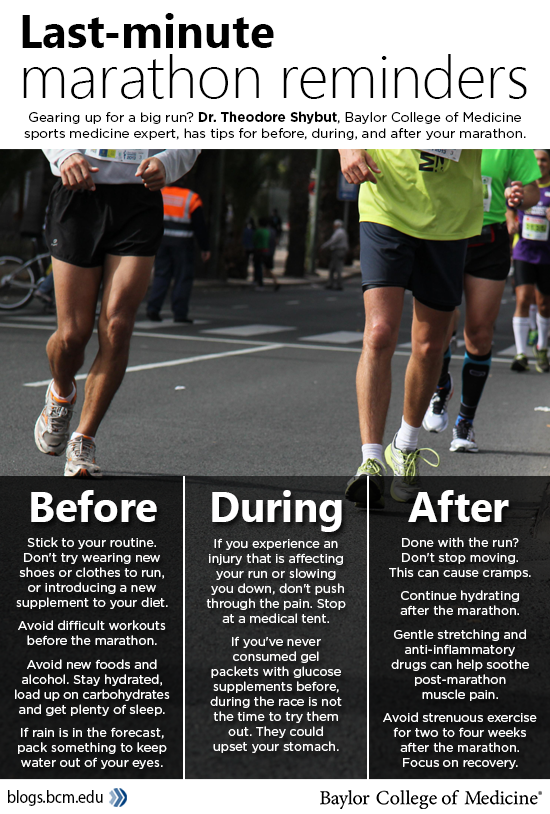Marathon Vs Sprinter
Marathon runners focus on endurance, while sprinters prioritize speed and explosive power. Both require dedicated training and different physical capabilities.
Running a marathon demands pacing and mental resilience, covering long distances at a steady pace. In contrast, sprinters excel in short bursts of intense speed, maximizing their power output in short distances. Understanding the differences between marathon runners and sprinters sheds light on the unique training methods and physical attributes needed for each discipline.
Whether you prefer the long-haul challenge of a marathon or the explosive speed of sprinting, both athletic pursuits offer their own set of rewards and challenges. Let’s explore the distinctions between these two types of runners and the specific skills they prioritize.
Different Training Approaches
When it comes to marathon runners and sprinters, their training approaches differ significantly. The training methods for these two types of runners are tailored to their respective needs, focusing on different aspects of endurance, speed, and strength. Let’s delve into the different training approaches for marathon runners and sprinters.
Long-distance Training
Marathon runners engage in extensive long-distance training sessions to build endurance and stamina for covering 26.2 miles. Their training includes regular long runs, tempo runs, and interval workouts aimed at improving their aerobic capacity and endurance. This form of training requires consistency and gradual progression to avoid injury and enhance overall performance.
High-intensity Training
On the other hand, sprinters concentrate on high-intensity, explosive workouts to boost their speed and power. Their training involves short, intense sprints, plyometric exercises, and strength training aimed at maximizing fast-twitch muscle fiber recruitment. Sprinters focus on quick bursts of energy, necessitating adequate recovery and rest periods between workouts to prevent burnout.

Credit: www.pinterest.com
Physical Characteristics
When comparing marathon runners to sprinters, their physical characteristics play a vital role in determining their performance.
Endurance Vs Speed
Marathon runners possess exceptional endurance capabilities, enabling them to sustain prolonged physical activity.
Sprinters, on the other hand, excel in short bursts of speed due to their fast-twitch muscle fibers.
Muscle Types
- Marathon runners have a higher percentage of slow-twitch muscle fibers, aiding in endurance activities.
- Sprinters primarily rely on fast-twitch muscle fibers, contributing to explosive power and speed.
Energy Systems
Understanding the energy systems is crucial when comparing marathon runners and sprinters. Our bodies rely on two main energy systems: Aerobic System and Anaerobic System.
Aerobic System
The Aerobic System uses oxygen to produce energy during longer durations of low to moderate intensity activity.
Anaerobic System
The Anaerobic System operates in the absence of oxygen, providing quick bursts of energy for high-intensity activities.

Credit: www.t-nation.com
Performance Factors
When it comes to comparing marathon runners and sprinters, understanding the performance factors is crucial. Both marathon running and sprinting require different sets of skills and training. Let’s delve into the key performance factors in this comparison.
Cardiovascular Fitness
Marathon runners require exceptional cardiovascular fitness to maintain a steady pace over long distances. Their training emphasizes building endurance and increasing aerobic capacity. On the other hand, sprinters focus more on short bursts of intense effort, relying on anaerobic energy systems. Their cardiovascular fitness is geared toward quick recovery between sprints.
Muscular Strength
Muscular strength is paramount for sprinters as they need powerful leg muscles to generate explosive speed. Strength training forms a significant part of their regimen, aiming to maximize muscle force output. In contrast, marathon runners also require muscular strength but lean towards more endurance-focused strength training to support their long-distance efforts.
Power And Explosiveness
Power and explosiveness play a pivotal role in sprinting performance. Sprinters rely on rapid acceleration and top speed, necessitating explosive muscle power. Their training includes drills and exercises to enhance fast-twitch muscle fibers. Marathon runners, however, emphasize sustained power output over a longer duration, leading to a training focus on muscular endurance and pace sustainability.
Common Injuries
Both marathon runners and sprinters put their bodies through intense physical exertion, pushing themselves to reach their goals. While they differ in terms of training style and race duration, both types of runners are susceptible to certain common injuries. Understanding these injuries can help athletes take better care of their bodies and minimize the risk of physical setbacks.
Overuse Injuries
Overuse injuries are a common concern for both marathon runners and sprinters. As the name suggests, these injuries occur when repetitive movements and stress placed on the body exceed its capacity for recovery. For marathon runners, the constant pounding on the pavement can lead to stress fractures, tendonitis, and shin splints. Sprinters, on the other hand, may experience overuse injuries such as Achilles tendinitis, runner’s knee, and hamstring strains due to the explosive bursts of speed and repetitive stride motion.
Muscle Strains
Muscle strains are another injury that marathon runners and sprinters may encounter. These occur when the muscle fibers are stretched beyond their limits, potentially resulting in tears. Marathon runners often face strains in the calf muscles, quadriceps, and hip flexors due to the long-distance nature of their races and the constant demand placed on these muscle groups. Sprinters, with their explosive movements and sudden accelerations, are prone to strains in the hamstrings, quadriceps, and groin muscles.
Injury Prevention
While injuries are an inherent risk in any athletic endeavor, there are certain measures that marathon runners and sprinters can take to prevent common injuries. Here are a few tips:
- Gradually increase training intensity and volume to allow the body to adapt gradually.
- Incorporate strength training exercises to build muscle strength and stability.
- Stretch and warm up properly before each training session or race.
- Listen to your body and give it adequate rest and recovery time.
- Wear appropriate footwear and replace them regularly to ensure proper support and cushioning.
By following these preventative measures and being mindful of their bodies’ limitations, both marathon runners and sprinters can enhance their performance and reduce the risk of common running injuries.

Credit: www.fitmole.org
Frequently Asked Questions On Marathon Vs Sprinter
Can Sprinters Compete In Marathons?
Yes, sprinters can compete in marathons but their training focus and technique differ from long-distance runners.
What Are The Main Differences Between Sprinters And Marathon Runners?
The main differences between sprinters and marathon runners lie in their training intensity, muscle fibers used, and race duration.
How Does The Body Adapt Differently For Sprinting And Marathon Running?
The body adapts differently for sprinting and marathon running in terms of muscle development, energy systems, and endurance capabilities.
Conclusion
In a nutshell, both marathon running and sprinting offer unique benefits and require different strategies and training. Whichever route you choose, it’s important to listen to your body, follow a well-planned regimen, and stay consistent to achieve your fitness goals.
Whether you prefer endurance or speed, finding the right balance is key for a healthy, well-rounded fitness routine.





